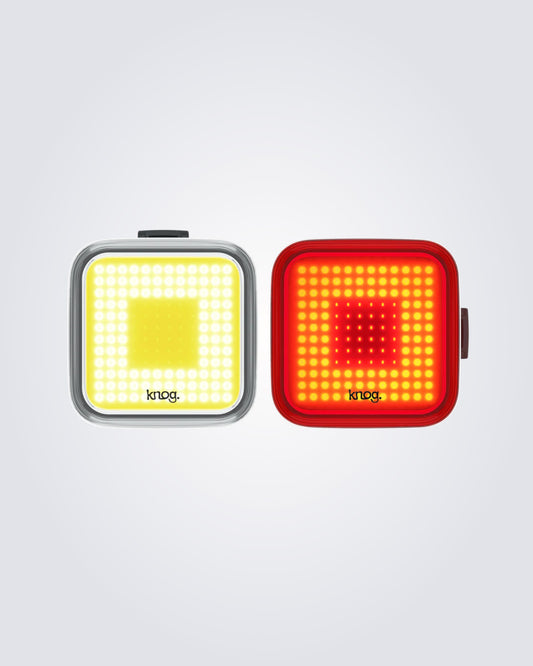Summer Sale Live! Save up to 25%
Delivered in 2-3 business days
1-year guarantee
14-day returns
Every once in a while, a city bike needs some maintenance. This is unavoidable unless you're willing to compromise your bike's durability.
Most people will need to seek the help of an expert to do this for them. You must know exactly what to get serviced so your bike returns to you in great condition.
That's why we've created this city bike maintenance checklist for you with all the essential bits that must be checked before you head back onto the road.
Shall we kick things off?
We're going to start this bike servicing checklist with the brakes because safety should always be your number one priority.
The brake inspection should start with a check on the brake pads to see if there's any wear on them. If they're bad, they may need to be replaced. A check on the brake cables should be done, too, to see if there's any fraying or wear and tear.
Make sure your mechanic also adjusts your brake callipers to align them correctly. After all that is done, a quick test should be carried out to see if everything is operating properly together.
A wheel and tyre review is an essential part of every city bike inspection checklist. Your tyre pressure will have to be looked at and inflated if it's too low, just so you don't get a flat next time you're on the road. Also, your mechanic must check to see if there are any slits or bulges in case it needs to be swapped for a new one.
When it comes to checking the wheels, you'll have to make sure the spokes are tight enough and grease the axles of the wheels if they need to be done.
Depending on your city bike's model, your gears might need a checkup. Your mechanic will shift through the gears to get an idea of their condition and decide what steps they need to take from there.
After that, they'll grease the derailleur pivot points if required so the shifting is a bit easier and have a look to see if the chain is operating correctly while shifting the gears.
Checking the pedals is a part of servicing a bicycle that you're probably already doing yourself, but there's no harm in ensuring your mechanic does it anyway.
They'll have to analyse the tightness of your pedals and see if they're spinning normally. If there's an issue, they'll tighten them for you and lubricate them if it's needed.
You'll already have a good idea if you need new pedals or not. If you think you do, try to buy them in advance and ask your mechanic to fit them, so you don't have to wait for them to order them.
A basic part of city bicycle maintenance is looking at the saddle. All your mechanic has to do is make sure the saddle height is correct and the seapost is firmly attached.
If you've been finding it uncomfortable to sit on recently, let them know so they can keep an eye out for any potential damage.
Handlebars are one of the most important parts of a bike maintenance manual because they control your steering and the direction in which you want to travel. If there's an issue with them and it's not looked at, you could have an accident in the future.
A handlebar check will include ensuring they're properly aligned and tightened. If the mechanic finds something off with them, they might have to look at the stem, giving them a better clue of their tightness and alignment.
The suspension of every city bike is different; some will have more than others, but it's important that there's enough to tackle all the urban potholes on your daily commute.
One of the tasks a mechanic will perform to see if your suspension is right might be an analysis of the suspension settings and adjust them if needed. They could also search to see if any damage has been done to the suspension components just to be on the safe side.
Every bike maintenance checklist has to include a frame analysis. Now, you'll probably already have some knowledge yourself if there are any problems with it because any issues will be easy to spot.
The mechanic will have a walk around the bike to see if there's any evident damage done to the bike, like small cracks or scrapes. Most of these are not detrimental and won't require further work unless they seriously impact your performance.
They'll also have to check the form to see if it's aligned right; if it's not, there could be a chance it has experienced some damage.
Before they finish up, ask them to quickly check if all the bolts and quick releases are tight enough so nothing falls off on your next pedal.
You should always ask the mechanic servicing your bicycle to see if the front and rear lights are working properly so you don't have a blackout in a dimly lit area on your way home from work in the evening.
It's only a matter of them flicking them on and off to check their functionality. If they find them to be weak, they'll usually change the batteries or put on a new one for you if they have them in their garage.
There's no harm in asking them to shine a light against your reflectors either, so you know if your visibility is up to standard when riding in the dark.
Finish up your bike maintenance checklist with a quick final safety review so you know it's road-worthy again.
Some minor things you can do, even as a beginner, before you leave are ringing the bike bell to ensure it is working properly and checking to see if the reflectors are in the right position. Remember to confirm that your brakes are strong enough, too, so you're able to stop instantly in the event of an emergency.
City Bike Price Guide: How Much Should You Spend?
What Are the Different Types of City Bike Frames





